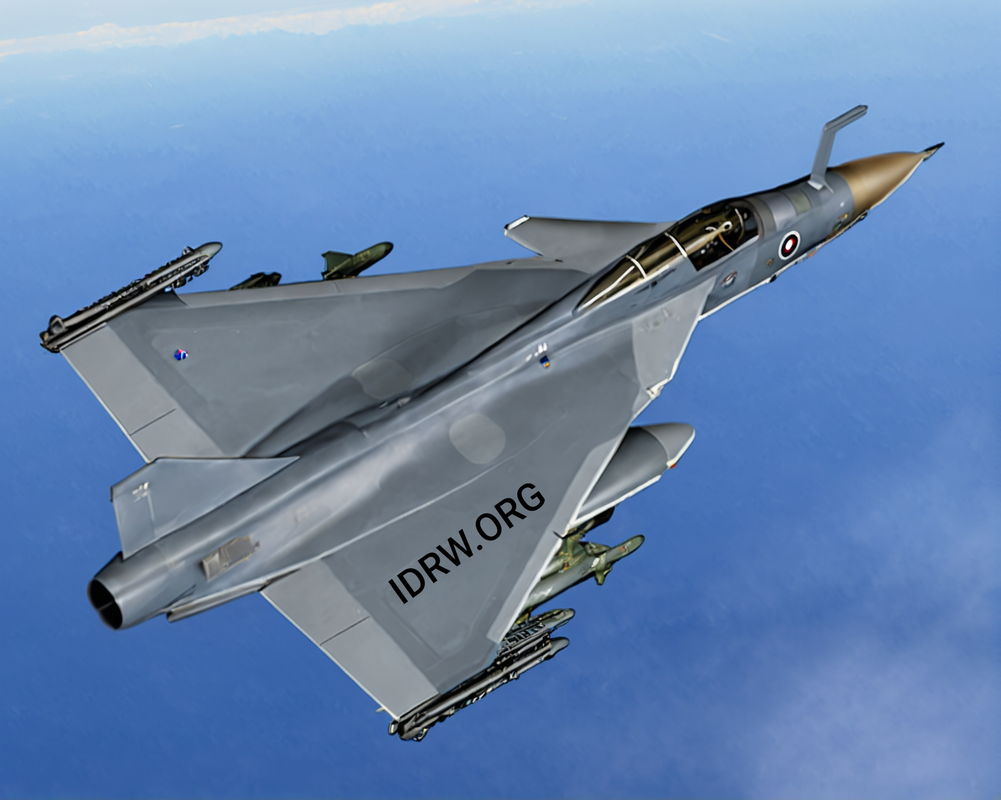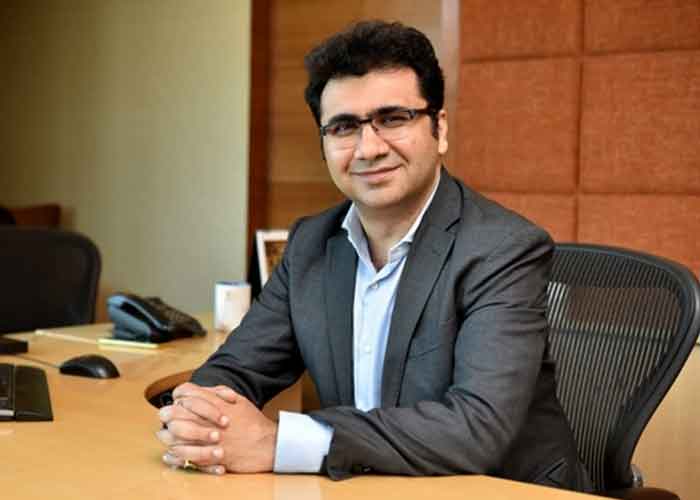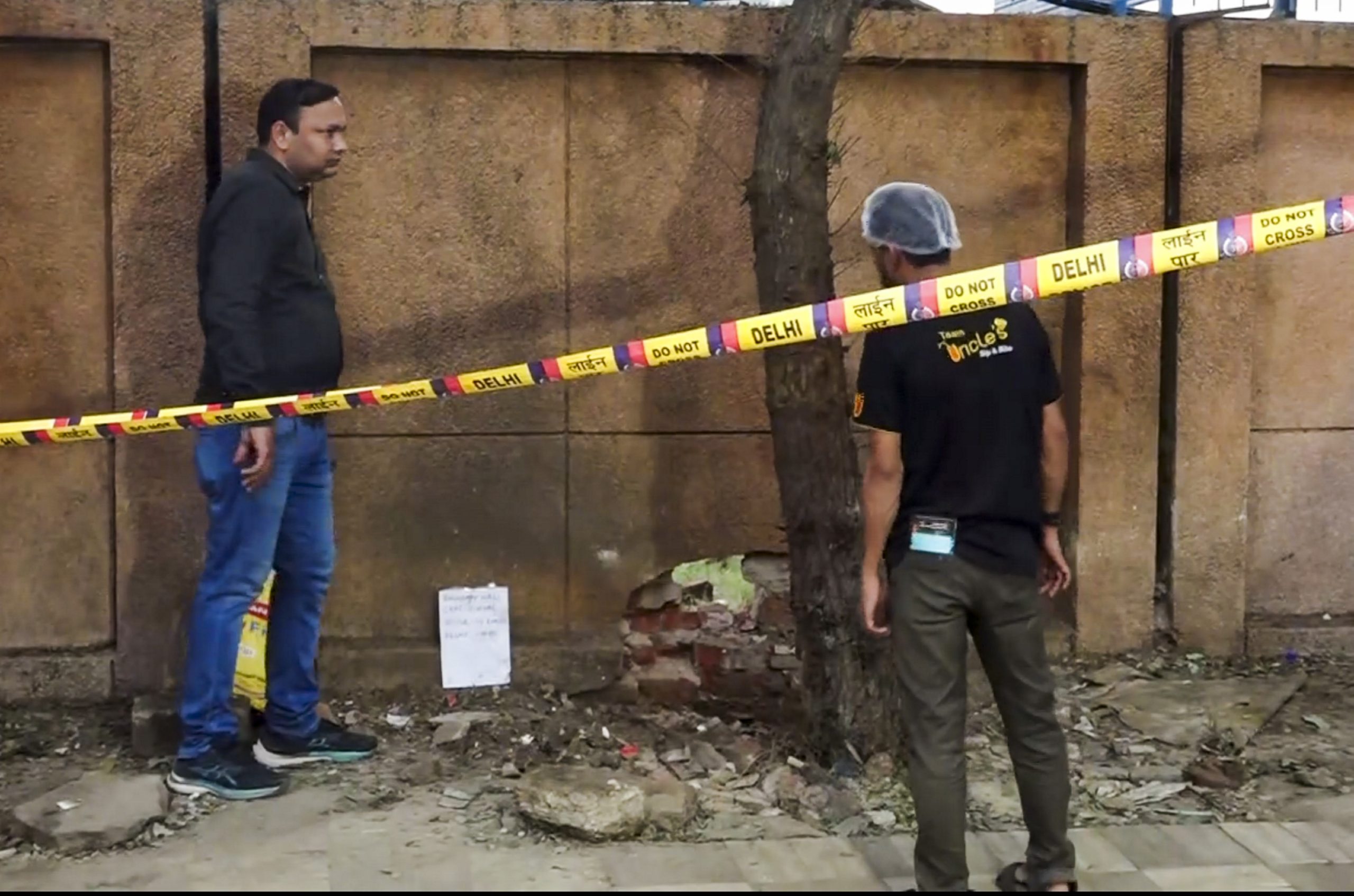SOURCE: ANI

In a coordinated effort, troops of the Indian Army, Assam Rifles, Manipur Police, and other security forces deployed in Manipur successfully recovered 12 weapons, ammunition, and warlike stores, according to a press release from the Indian Army.
According to an official release, the Indian Army, Assam Rifles, Manipur Police, and other security forces have been relentlessly carrying out intelligence-based joint operations in both the hill and valley regions in Manipur.
Continue readingSOURCE: IDRW.ORG

Indian robotics and AI company Gridbots has developed a state-of-the-art autonomous weapon station named KATANA, designed to enhance the situational awareness and defensive capabilities of homeland security units and unmanned ground vehicles (UGVs). The KATANA Autonomous Weapon Station represents a major technological leap, integrating advanced AI systems to track, lock onto, and eliminate multiple threats in seconds, providing a fully autonomous defense solution.
KATANA’s integration of AI and deep learning technologies sets it apart from traditional weapon stations. The system’s AI not only tracks and identifies targets but also learns from previous engagements, allowing it to become more efficient over time. This capability ensures that KATANA can detect, identify, and neutralize threats faster and more accurately than systems relying solely on manual operation.
Continue readingSOURCE: IDRW.ORG

A significant development in the Indian Army’s equipment modernization has seen Sikh soldiers sporting the Kavro SCH 111 T ‘Veer’ helmet, designed specifically for Sikh soldiers. The helmet, developed by Indian firm MKU Limited, is designed to be worn over a cloth patka or turban, providing all-around ballistic protection across the head.
The Indian Army began receiving these helmets last year, and they offer NIJ Level IIIA protection, capable of resisting 9 mm bullets. MKU emphasizes the helmet’s lightweight, anti-allergic, all-weatherproof, and chemical-safe properties, along with its excellent shock absorption capabilities.
Continue readingSOURCE: AFI

French aerospace giant Safran is actively lobbying to jointly work on the development of a 110 kN engine specifically designed for India’s Advanced Medium Combat Aircraft (AMCA) program, with aims to produce a next-generation fifth-generation fighter jet has indicated that the new 110 kN engine could seamlessly integrate into the Tejas MkII platform if India opts to transition away from the F-414 engine. While current discussions focus on local production of the F-414, the prospect of a more powerful engine remains a significant consideration for future enhancements to the Tejas fleet.
The new 110 kN engine is projected to enter production around 2033-34, aligning closely with the timeline for the Tejas MkII, which is expected to commence production in 2029-2030. This parallel timeline presents an intriguing possibility for India, as the IAF considers its options for engine configurations in future aircraft.
Continue readingSOURCE: AFI

Vikram Rai, Chief Executive of GE Aerospace South Asia, announced that the company is set to begin manufacturing the F414 jet engine in India soon. Speaking at the NDTV World Summit on Monday, Rai confirmed that the engines, which will power the Tejas MkII fighter jet, will be produced in collaboration with Hindustan Aeronautics Limited (HAL) at a facility in Bangalore.
This development comes as India seeks to boost its indigenous defense manufacturing capabilities while reducing its dependence on foreign military imports. HAL and GE are expected to finalize a deal for 99 F414 engines by the end of 2024, with production anticipated to start in the next three years. The first deliveries are expected to occur by late 2027 or early 2028.
Continue readingSOURCE: AFI

Indian port authorities have redoubled their efforts to monitor maritime traffic passing through Indian waters following a surge in military-grade consignments originating from China and destined for Pakistan’s strategic entities. These shipments pose a significant threat to regional security, and Indian agencies are working tirelessly to prevent their entry into the country.
While the risk has escalated in regions like the Red Sea, Bab al-Mandab Strait, and the Gulf of Aden, Indian authorities remain vigilant about potential threats closer to home. Despite numerous seizures and sanctions imposed on alleged state-supported entities and shell companies, suspected clandestine proliferation activities have continued in recent months.
Continue readingSOURCE: AFI

The Defense Institute of High Altitude Research (DIHAR), Leh, under the Defense Research and Development Organization (DRDO), is developing cutting-edge solar thermal warming technology aimed at providing reliable heating solutions for soldiers stationed in extreme weather conditions. This solar thermal heating system is designed to combat the harsh winter conditions in high-altitude regions such as Ladakh, where temperatures can drop as low as -40°C.
The core of this system is based on solar thermal technology, which captures solar energy and transfers it to a heat transfer fluid. The fluid, which is a specially formulated mix of water and organic materials, can operate effectively even in temperatures as low as -40°C. Once the fluid absorbs the heat, it is stored in insulated tanks. The system then regulates the indoor temperature automatically based on sensor inputs, ensuring a stable and comfortable environment for the soldiers.
Continue readingSOURCE: AFI

The Indian Army has showcased a novel application for its robotic dogs developed by ARCVENTURES. In recent operations, these canine-inspired robots were observed carrying ammunition boxes to forward soldiers engaged in active firing.
This innovative use of robotic dogs aligns with the Indian Army’s growing interest in exploring the potential of robotics and artificial intelligence for various military roles. By utilizing robotic dogs for resupply missions, the Army can reduce the risk to human soldiers and improve the efficiency of logistics operations.
Continue readingSOURCE: IANS

External Affairs Minister (EAM) S. Jaishankar on Monday termed the India-China agreement on patrolling arrangements along the Line of Actual Control (LAC) in eastern Ladakh as a “positive development” and a product of very “patient and persevering diplomacy”.
Foreign Secretary Vikram Misri announced Monday afternoon that both countries, after discussions that have taken place over past several weeks, arrived at an agreement on patrolling arrangements along the LAC leading to disengagement and eventually a resolution of the issues that had arisen in the region 2020 following the violent Galwan Valley face-off in June 2020.
Continue readingSOURCE: ANI

In a significant development, India and China have reached an agreement on the patrolling arrangements along Line of Actual Control (LAC) in eastern Ladakh. The agreement was reached ahead of the BRICS Summit which will be attended by Prime Minister Narendra Modi and Chinese President Xi Jinping. Foreign Secretary Vikram Misri, who addressed a special media briefing ahead of PM Modi’s visit to Russia for the BRICS Summit, said as a result of the discussions with the Chinese interlocuters an agreement has been arrived at on patroling arrangements along the Line of Actual Control (LAC) in the India-China border areas.
He said this is leading to dis-engagement and eventually a resolution of the issues that arose after action by Chinese military in eastern Ladakh in 2020. “We have been in discussion with Chinese interlocuters through WMCC as was mentioned earlier and at the military level as well through meetings of the military commanders at various levels.
Continue readingSOURCE: ANI
)
Recalled Indian High Commissioner to Canada, Sanjay Kumar Verma, alleged that Khalistani extremists and terrorists are “deep assets” of Canada Security Intelligence Service (CSIS).
In an interview to Canada-based CTV News, Ambassador Verma, accused the Canadian government of “encouraging” Khalistani extremists.” “Khalistani extremists are being encouraged all the time. This is my allegation, I also know that some of these Khalistani extremists and terrorists are deep assets of CSIS, again I’m not giving any evidence,” the Ambassador said.
Continue readingSOURCE: UNI

Khalistani terrorist Gurpatwant Singh Pannun, leader of the separatist group Sikhs for Justice (SFJ), has once again issued a serious threat targeting Air India on social media platforms. Pannun cautioned passengers to avoid flying with the airline between November 1 and 19, citing the 40th anniversary of the 1984 anti-Sikh riots, which he refers to as the “Sikh genocide.” This latest threat has raised concerns over the safety of travellers and added to the security challenges faced by Indian aviation authorities.
The founder of Sikhs for Justice (SFJ), who holds dual citizenship in Canada and the US, had issued a similar threat around the same time last year.
Continue readingSOURCE: PTI

Delhi Police probing a possible Khalistani link in the blast near a CRPF school here on Monday wrote to messaging app Telegram to know the details of a group that claimed responsibility of the explosion, police sources said on Monday.
A strong blast ripped through a wall of the CRPF school in Rohini’s Prashant Vihar area on Sunday morning. No one was hurt in the blast but a signboard, hoardings of nearby shops and window panes of vehicles parked near the spot were damaged in the incident.
Continue readingSOURCE: PTI
)
The US indictment linking a former Indian agent to a foiled bid to assassinate Khalistani separatist Gurpatwant Singh Pannun paints a “compelling and detailed portrait” of “a single plot” emanating from Delhi to kill multiple targets across North America, especially in Canada and the US, Canada’s most recent envoy to India Cameron MacKay has alleged.
In an interview to CBC News, MacKay, who left India in August, said both Canada and the US are probing the matter, adding it was “a fiasco on the part of the Indian government” to think that it could carry out crimes in Canada and the US and get away with it.
Continue readingSOURCE: PTI
)
Russia’s top diplomat has said that his country believes that India, Brazil and African countries should be represented in the UN Security Council on a permanent basis to ensure the representativeness of the global majority, state-owned TASS news agency reported on Sunday.
“Countries such as India, Brazil, as well as representatives of Africa should have been on a permanent basis in the Security Council for a long time. This is necessary to ensure representativeness, representation of the global majority,” Russian Foreign Minister Sergey Lavrov told aif.ru. in an interview, TASS reported.
Continue reading